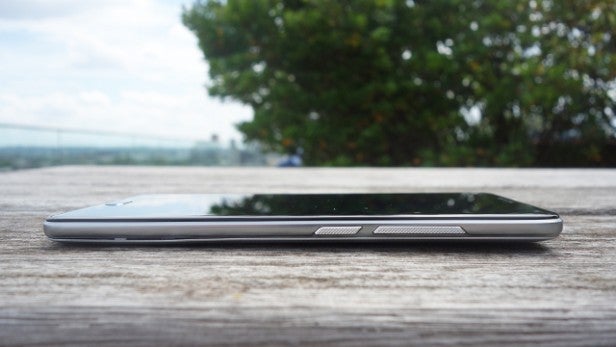Vodafone Smart Ultra 7 Review - Software and Performance Review
Software and Performance
A real challenger to the Moto G?

Sections
- Page 1 Vodafone Smart Ultra 7 Review
- Page 2 Software and Performance Review
- Page 3 Camera, Battery, and Verdict Review
Vodafone Smart Ultra 7 – Software
Vodafone has loaded the Smart Ultra 7 with Android 6.0.1 Marshmallow, and it’s done so without cramming in too much bloatware. In fact, Marshmallow remains virtually untouched, save for the handful of Vodafone apps that come pre-installed.

Bloatware is one of my biggest issues with any device, whether it be a computer, tablet, or smartphone. Consumers don’t like to be overwhelmed by random pop-ups and requests from programs that seemingly do the same thing as the stock software.
While Vodafone has been fairly charitable when it comes to showing restraint with bloatware on the Smart Ultra 7, it’s still present – lurking and poised to irritate. Vodafone apps include: the company’s calling and messaging alternatives; Accessories, which is just an excuse to get you to buy more stuff; Start; Updates; and the ever-helpful Tips app.

Those unfamiliar with touchscreen phones might find the Tips app useful, but for the most part, Android works perfectly well without these apps and it’s best to just ignore them.
To its credit, though, Vodafone has provided an almost untouched version of Google’s mobile OS, and the phone is all the better for it. Marshmallow is a great OS and it’s allowed to shine unimpeded on the Smart Ultra 7.
Vodafone Smart Ultra 7 – Performance
When it comes to specs, the Smart Ultra 7 isn’t going to blow you away, but it does manage to pack in hardware that promises stable, and even speedy performance. The 1.0GHz/1.8GHz octa-core MediaTek MT6755M CPU is no Snapdragon 820, but it does the job well enough that you won’t notice slowdown of any kind.

Alongside the CPU, there’s 2GB of RAM and 16GB of internal storage. It’s worth noting that the 16GB actually works out to about 9.8GB once you factor in the stock apps and system memory. In comparison, the Moto G4 comes with the same amount of RAM and either 16 or 32GB of internal storage, while the OnePlus X comes with 3GB of RAM and 16GB internal storage.
One plus point here is that you can upgrade the internal storage of Vodafone’s handset with a microSD card – something that both the Moto G4 and OnePlus X also offer.
Using the Smart Ultra 7 is, for the most part, a trouble-free experience. You might notice a slight pause when loading certain apps: my review model took a few seconds to load Chrome. But, on the whole, everything works fluidly. Gaming is similarly smooth: the handset ran the graphically intense Asphalt 8 without a hitch – although it does become a little warm during the process.

In terms of benchmarking, the Smart Ultra’s chip held up well in the Geekbench 3 multi-core stakes, rolling in with a score of 3,094. That’s in comparison to the Moto G4’s 3,190 and the OnePlus X’s 2,542, which makes the Smart Ultra just as good as, if not better than in some instances, the competition when it comes to performance.
Unfortunately, there’s no USB Type-C connection included here, nor a fingerprint scanner. Huawei’s £169 Honour 5X, which offers another great budget smartphone experience, does include a fingerprint scanner; however, it’s unusual on a smartphone costing £135.
On the plus side, Vodafone has provided an NFC chip with the Smart Ultra 7, meaning you’ll be able to get fully acquainted with Android Pay if you invest in its device.
How we test phones
We test every mobile phone we review thoroughly. We use industry standard tests to compare features properly and we use the phone as our main device over the review period. We’ll always tell you what we find and we never, ever, accept money to review a product.

